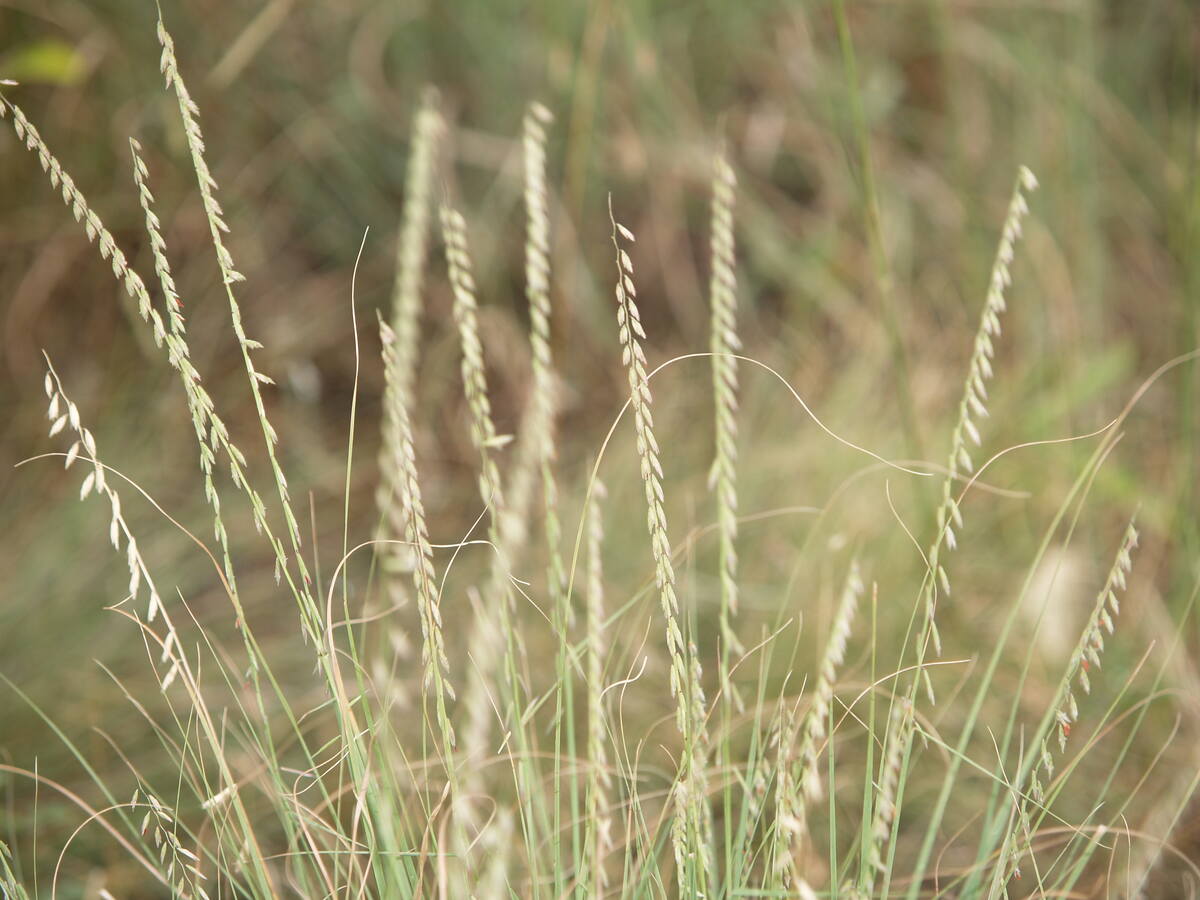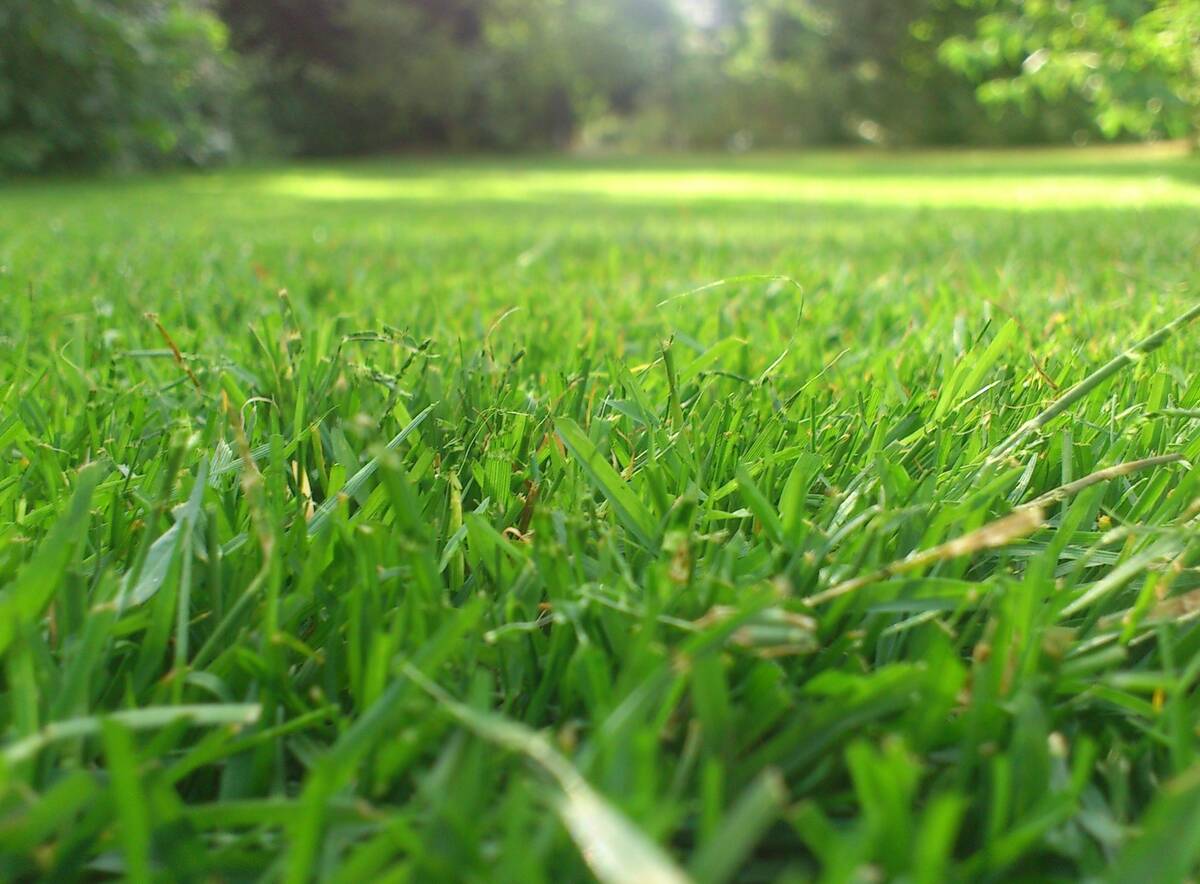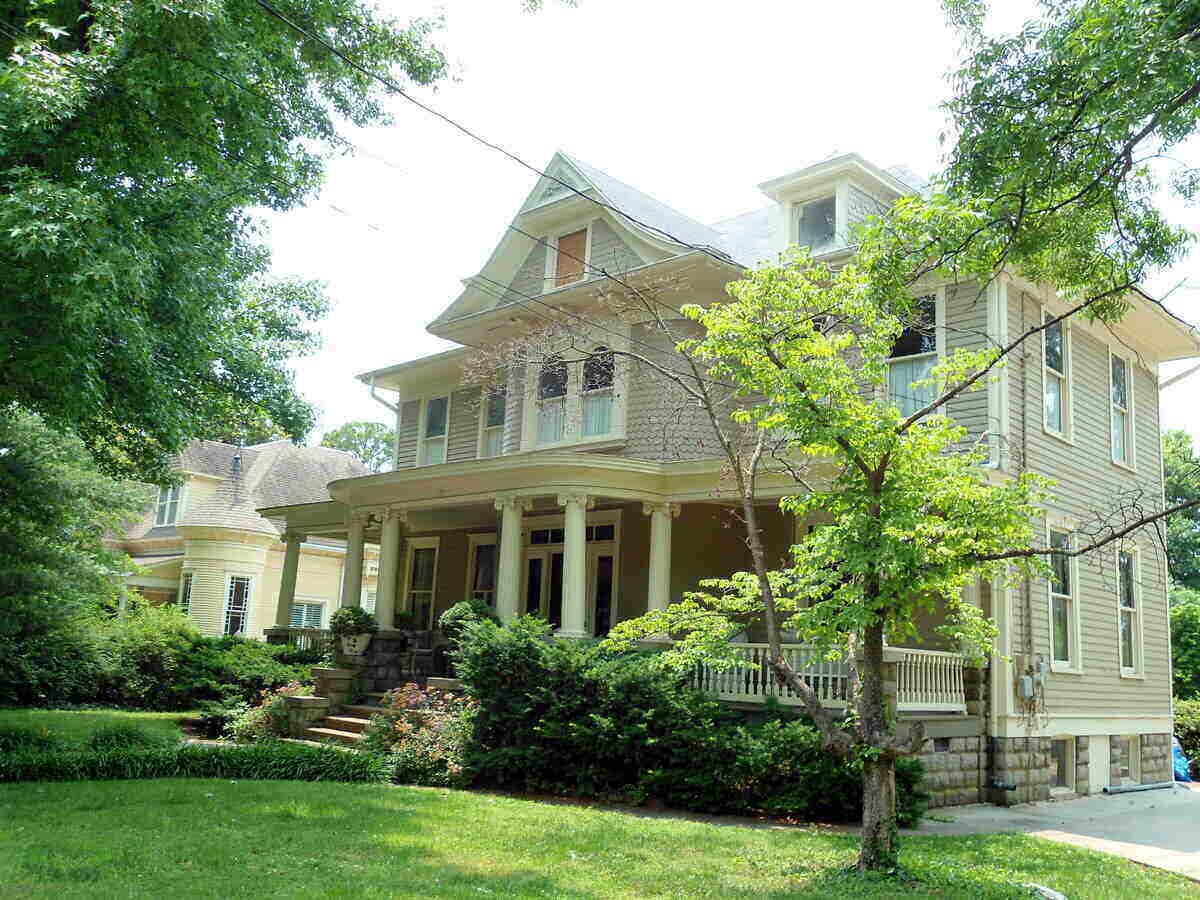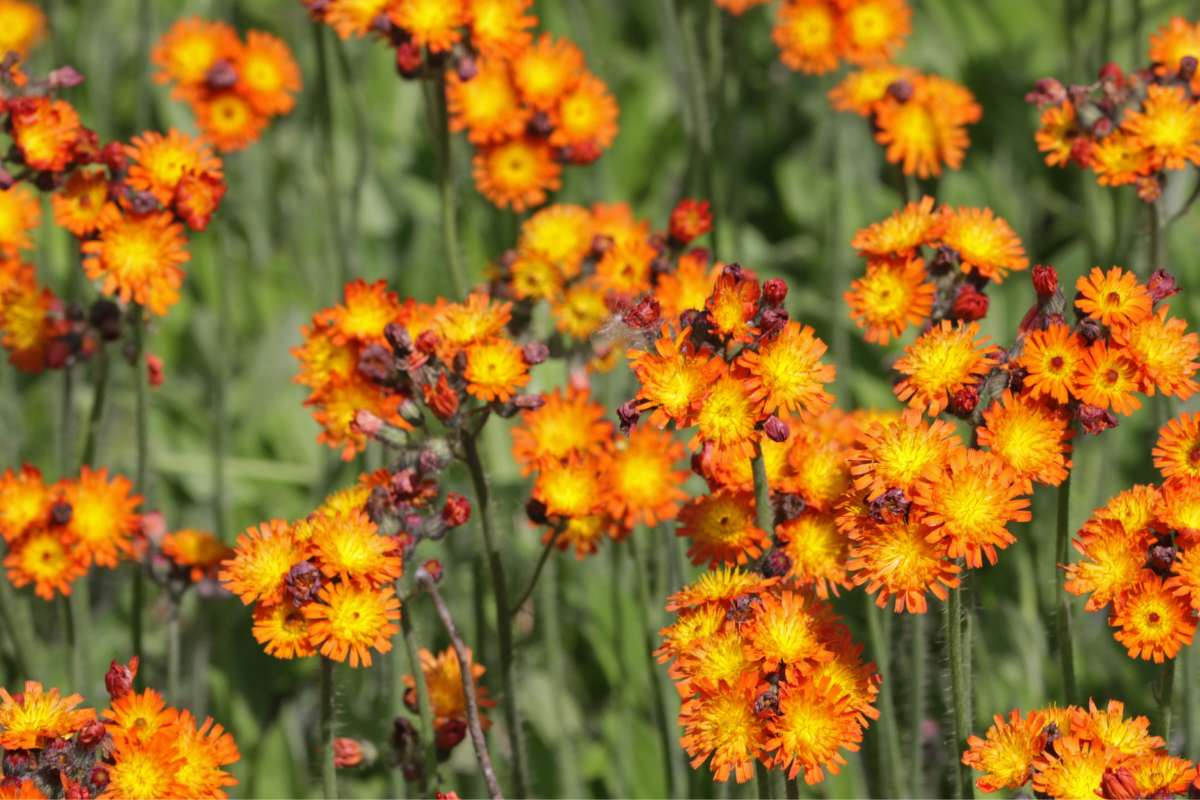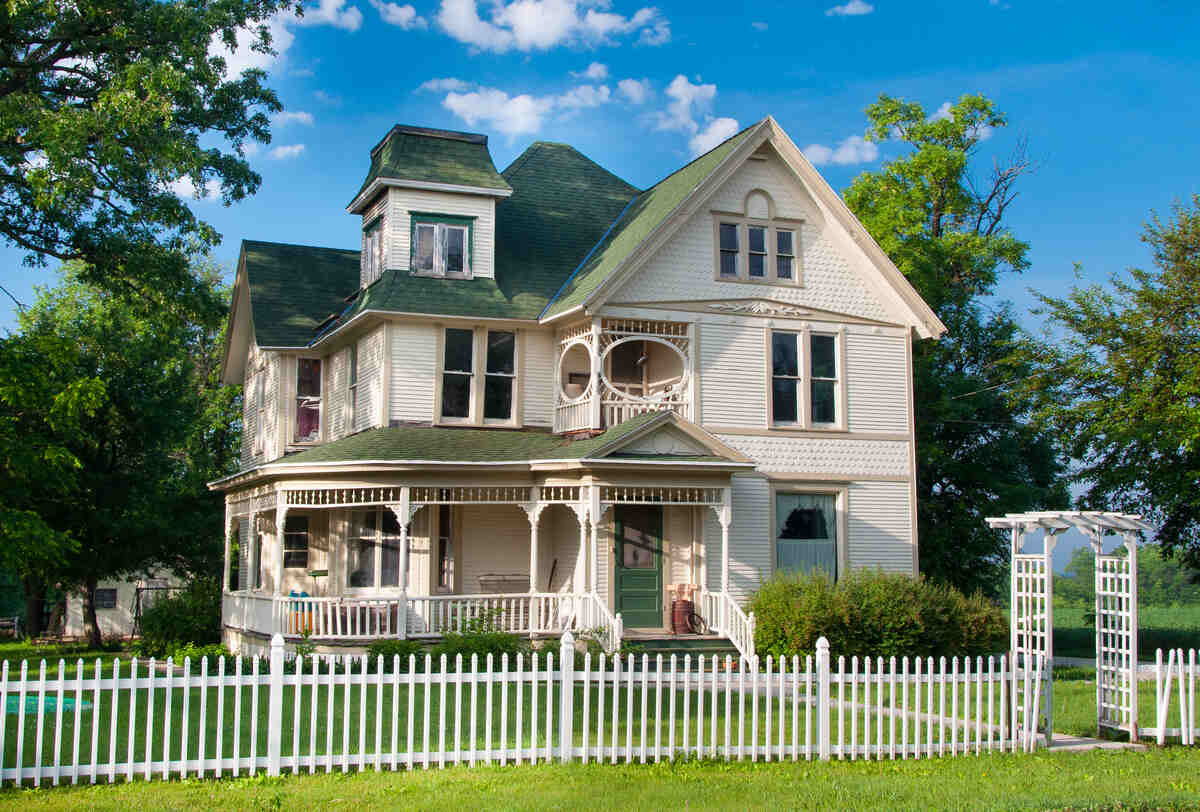
Wisconsin is a state made up of an incredible number of soils, with around 150 of them unique. That doesn’t mean that you need a special type of grass, though. Cool-season grass is the best grass seed for Wisconsin. Native grasses, which are increasing in popularity, are also an option for Badger State lawns and ornamental beds. Let’s get started!
For a summary, skip ahead to our section on how to select the best grass type for Wisconsin.
Grass Growing Zone for Wisconsin
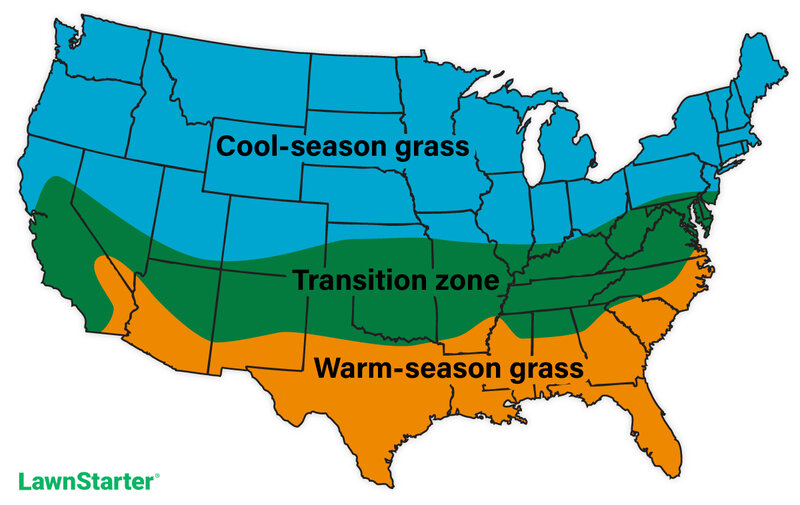
Wisconsin fits snugly in the cool-season grass growing zone. Cool-season grasses grow in spring and fall when temps are cool and may go dormant in the summer under excessive heat or drought conditions.
Cool-Season Grasses
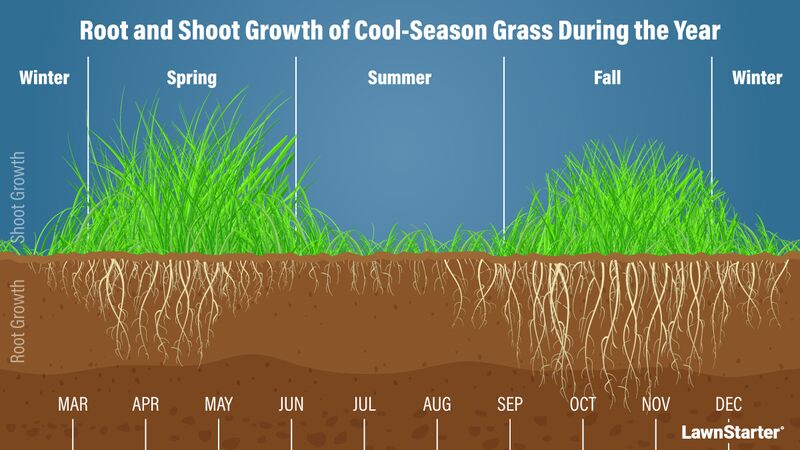
Kentucky Bluegrass

Photo Credit: Shutterstock
Kentucky Bluegrass is common in the Midwest because it tolerates cold better than any other grass. It’s known for its ability to withstand weather that damages fescue or ryegrass. However, Kentucky bluegrass needs a lot of watering, fertilization, and mowing. It doesn’t do as well in sandy soil, so there are regions where extra attention will be needed if you use this popular grass.
Classification: Cool-season grass
Spreads by: Rhizomes
Shade tolerance: Low
Drought tolerance: Moderate
Foot traffic tolerance: Moderate
Maintenance needs: Moderate mowing frequency and high fertilization needs.
Mowing height: Set mowing height between 2.5 and 3.5 inches.
Potential for disease: Moderate to high; prone to several diseases, such as dollar spot, leaf spot, necrotic ring spot, summer patch, and stripe smut.
Soil pH: 6-7.5
Soil type: Performs best in well-drained, heavy soils with high fertility.
A pro’s tip: Rough bluegrass and supina bluegrass are related to Kentucky bluegrass and grow well where it does not, the shade. However, they have a light green color that doesn’t match the existing grasses, giving a lawn a patchwork look often described as “ugly.” They also require even more maintenance than Kentucky bluegrass.
Grass Seed Options:
– Jonathan Green (11970) Blue Panther Kentucky Bluegrass Grass Seed (3 lbs.)
– SeedRanch Midnight Kentucky Bluegrass Seed (5 lbs.)
Perennial Ryegrass
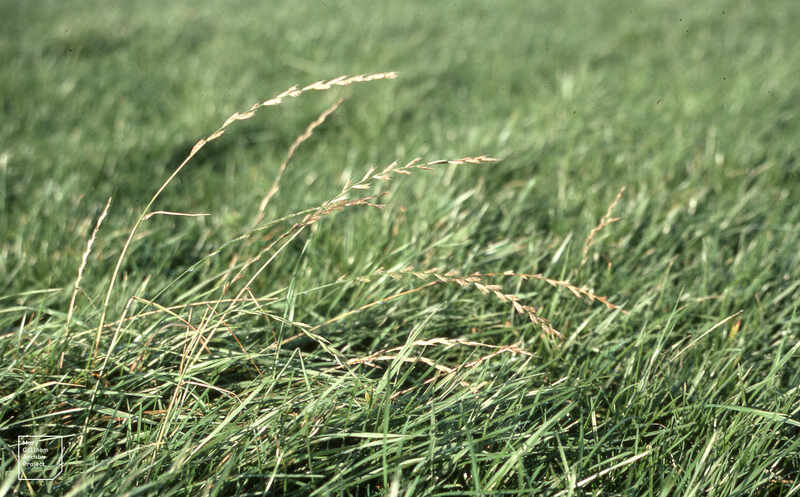
Photo Credit: Dr Mary Gillham Archive Project / Flickr / CC BY 2.0
Perennial ryegrass is the first of the grasses to become green (a notably dark green) when the snow melts. It has good cold tolerance, but its heat and drought tolerance varies by cultivar. It is also common for a perennial ryegrass lawn to develop bare spots from wear or stress. As a bunch-type grass, these won’t fill in on their own; they must be overseeded (preferably in fall).
Classification: Cool-season grass
Spreads by: Has a bunch-type growth habit
Shade tolerance: Low
Drought tolerance: Low
Foot traffic tolerance: High
Maintenance needs: Moderate mowing and fertilization requirements. Thatch is not significant.
Mowing height: Set mowing height to 1.5 to 2.5 inches
Potential for disease: High. Common diseases include gray leaf spot, red thread, and leaf spot/melting-out.
Soil pH: Can grow in soils with a pH between 5 and 8, but prefers between 6 and 7.
Soil type: Prefers good drainage and fertility, but can tolerate some poor drainage.
Grass Seed Options:
– Outsidepride Perennial Ryegrass Seed (5 lbs.)
– Eretz ProTurf Perennial Ryegrass Fine Lawn Seed (choose your size)
Tall Fescue

Aaron J. Patton, Ph.D. / Turfgrass Extension Specialist at Purdue University
Tall fescue grows well throughout the state but has a better tolerance for warm weather than the other cool-season grasses, making it a popular choice in the southern part of Wisconsin. It also does well in sandy soils, making it a good choice in those areas.
Older cultivars of tall fescue grass are usually coarse in texture, so it isn’t a grass the kids or pets will want to romp on. In fact, it isn’t a lot of fun for adults to go barefooting on. Newer turf-type tall fescues are often finer in texture and have a better feel underfoot.
Classification: Cool-season grass
Spreads by: Produces short rhizomes but has a bunch-type growth habit
Shade tolerance: Moderate
Drought tolerance: Moderate to High
Foot traffic tolerance: Moderate
Maintenance needs: Frequent mowing. Does not produce significant thatch.
Mowing height: Set mowing height to 2 inches when grass reaches 3 inches tall.
Potential for disease: Tolerant of most diseases when properly maintained.
Soil pH: 5.5-6.5
Soil type: Adapted to a wide range of soil conditions, but prefers fertile clay soils with good drainage.
Grass Seed Options:
– Triple-Play Tall Fescue Grass Seed Blend (5000 sq ft)
– Eretz Kentucky 31 K31 Tall Fescue Grass Seed (choose your size)
– Pennington The Rebels Tall Fescue Grass Seed Mix (7 lb.)
Fine Fescues
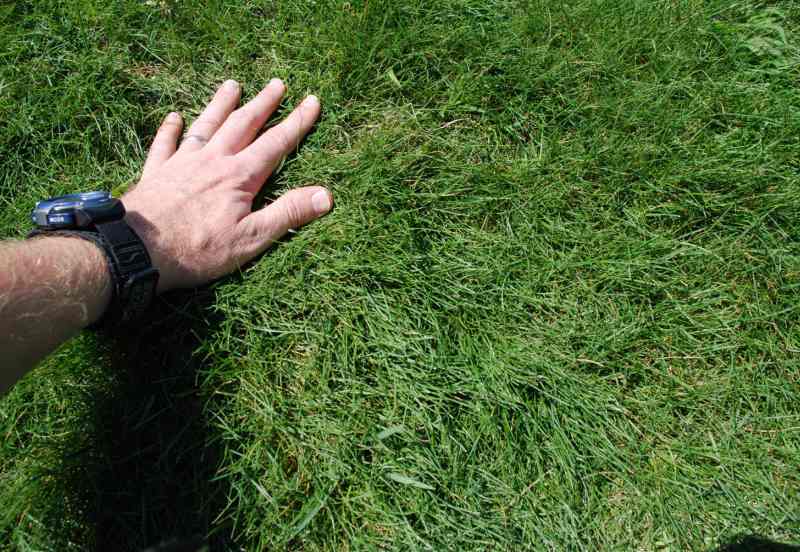
Aaron J. Patton, Ph.D. / Turfgrass Extension Specialist at Purdue University
Fine fescues (creeping red, Chewings, and hard are the ones found in Wisconsin) grow well in a lot of soil types, making them a good choice in Wisconsin. They are also one of the best cool-season grasses for Wisconsin due to their extreme resistance to winter freezes. Fine fescues also grow in the many soils found in Wisconsin.
Fine fescues need less fertilizer, water, and mowing than Kentucky bluegrass and perennial ryegrass but are one of the types of grass seed that will turn brown during summer.
A pro’s tip: Fine fescues are often combined with Kentucky bluegrass in order to have a lawn seed that grows in both the sun and shade. But be warned: The fine fescues will dominate the shady spots and Kentucky bluegrass will dominate the sunny spots, making for a funny-looking lawn, albeit a healthy lawn.
Classification: Cool-season grass
Spreads by: Creeping red fescue spreads by rhizomes, while other fine fescues are bunch-type grasses, such as Chewings, hard, and sheep fescues.
Shade tolerance: Moderate to High, depending on species
Drought tolerance: Moderate to High, depending on species
Foot traffic tolerance: Low to Moderate, depending on species
Maintenance needs: Low fertilizer and mowing needs
Mowing height: Set mowing height between 2.5 and 4 inches, depending on species.
Potential for disease: Moderate. Common diseases include red thread, leaf spot, dollar spot, summer patch, and powdery mildew.
Soil pH: 6-6.5
Soil type: Will not perform well in wet soil conditions. Prefers drier soils and tolerates a wide range of soil types and fertility.
Grass Seed Options:
– Outsidepride Legacy Fine Fescue Grass Seed (5 lbs.)
– Eretz Creeping Red Fine Fescue Seed (choose your size)
– Outsidepride Creeping Red Fine Fescue Grass Seed (25 lbs.)
– Outsidepride Hard Fine Fescue Grass Seed (10 lbs.)
Native Grass: Can Be Mowed
Blue Grama
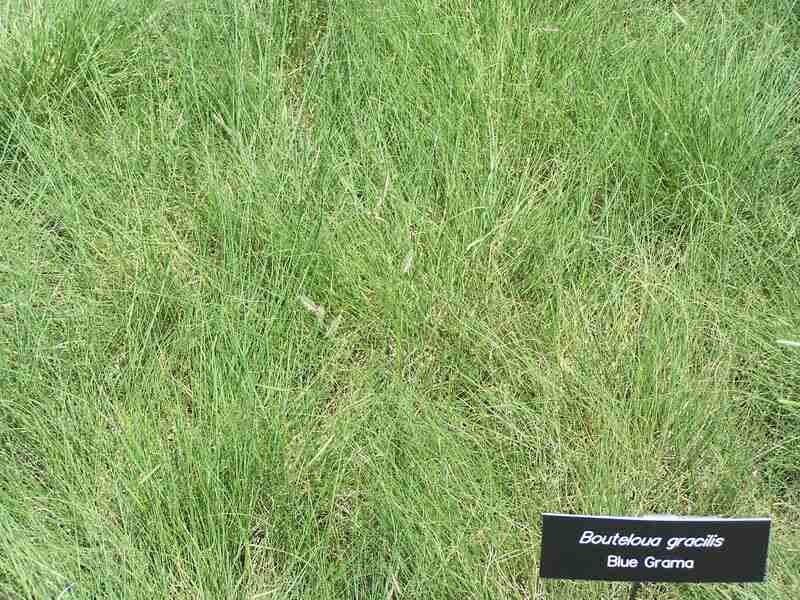
Photo credit: SEWilco / Flickr / CC BY-SA 3.0
Blue grama is a native grass that is being rediscovered as a turfgrass. It is suited for Wisconsin because of its ability to grow in a lot of different soils.
Unlike other warm-season grasses (e.g., Zoysiagrass, Bermudagrass), blue grama has a history of growing in cold-weather sites; when the first European settlers arrived in Wisconsin, they found it growing in the cooler high elevations … just as the first Oneota did.
Classification: Warm-season
Spreads by: Rhizomes
Shade Tolerance: Low
Drought Tolerance: High
Foot Traffic Tolerance: Low
Maintenance Needs: Low maintenance requirements
Mowing Height: Set mowing height between 2 and 3 inches
Potential for Disease: Low to Moderate. Its most prevalent disease is fungal rust.
Soil pH: 6.6-8.4
Soil Type: Tolerates a wide-range of soil textures, including clays and sandy or gravelly loams. Does not perform well in wet, poorly drained soils.
Native Grasses: Ornamental
There were once 2.1 million acres of native tallgrass prairie growing in Wisconsin. Then people started showing up. Today, less than 0.1% of that grassland is still in place.
Most of the native grasses still growing in Wisconsin are found on roadsides. But in recent years, people have taken to making a connection to their heritage by using some of these natives as ornamental grasses in their yards.
The native grasses that are becoming popular again include cool-season grasses that developed in the northern part of the state:
- Virginia wild rye (Elymus virginicus). Grows in all of Wisconsin’s soils, and in sun and shade.
- Tufted hairgrass (Deschampsia cespitosa). Grows in all of Wisconsin’s soils. Remains short.
There are also warm-season grasses grasses that developed in what is now the southern part of Wisconsin:
- Prairie dropseed (Sporobolus heterolepis). Good in sandy soils. Needs full sun.
- Little bluestem (Schizachyrium scoparium). Good in Wisconsin’s sandy soils, but not in its clay soils. Needs full sun and dry earth.
- Big bluestem (Andropogon gerardii). Grows in all of Wisconsin’s soils, but needs full sun.
- Indiangrass (Sorghastrum nutans). Grows in all of Wisconsin’s soils, but doesn’t do well in the smaller spaces of yards.
Challenges to Growing Grass in Wisconsin
Seeding Dates are Tight
Whether you’re overseeding an existing lawn or planting grass seed for a new lawn, pay attention to the best dates to put down seed.
From the U.S. Department of Agriculture’s Natural Resources Conservation Service:
| Cool-season Grasses | |
| North | May 1-June 15 July 15-August 10 |
| Central | April 15-June 1 August 1-August 21 |
| South | April 1-May 15 August 7-August 29 |
A pro’s tip: Some professionals will utilize “dormant seeding” in which they spread grass seed in November, counting on the seeds to start germinating when the temperatures warm in spring.
A State of Many Soils
Eighty percent of the state is made up of glacial deposits that differ in texture, composition, thickness, and age. That has led to the state having more than 700 soil groups, about 150 of which are found nowhere else.
This has resulted in the different regions of the state having different soils:
- Southeast, silty
- South central, a silt/sand mixture.
- East central, sandy
- East, reddish silt/clay
- Northeast and north central, silt/sand mixture
- Northwest, silty.
The soils came about after one of the great times of climate change, the melting of glaciers 11,000 years ago. Looking ahead, the rising temperatures and increasing rainfall that are starting to happen will bring uncertainty to Wisconsin’s soils:
- Growing seasons: Will they change, favoring different plants and grasses?
- Runoff: Will it become more of a factor, creating erosion and pollution (as fertilizers and the like are pulled into streams)?
- Different growths: Will change favor invasive growths, bringing in pests, disease, and invasive species?
How to Select the Best Grass Type for Wisconsin
Can the Lawn Be Used?
The kids can run wild on it: Perennial ryegrass
You can invite the neighbors over: Kentucky bluegrass, tall fescue
A grass to look at, not really to walk on: Fine fescue, blue grama, the native grasses
How Often Does It Need Mowing?
It’s a mistake to take a week off: Tall Fescue
It doesn’t grow that fast for lawn grass: Kentucky bluegrass, perennial ryegrass
The growth is slow: Fine fescue, blue grama, the native grasses
What Are the Maintenance Needs?
It can’t be ignored (high maintenance): Kentucky bluegrass
It’s reasonable: Tall fescue, perennial ryegrass
It is what they mean by low maintenance: Fine fescue, blue grama, the native grasses
What If It Is In Shady Areas?
You can plant it under trees: Fine fescue
It should be fine, but check it: Tall fescue
Not made for the shade: Kentucky bluegrass, blue grama, the native grasses, perennial ryegrass
Droughts Are a Concern in Wisconsin
Grass that should survive: Fine fescue, tall fescue, blue grama, the native grasses
It might go dormant, but it will recover: Kentucky bluegrass
Needs water: Perennial ryegrass
Might It Attract Diseases?
It happens a lot: Perennial ryegrass
Be aware of the signs: Kentucky bluegrass
Should be fine: Fine fescue, the native grasses
You don’t have to worry: Tall fescue, blue grama
How Does It Do In Areas Washed by Road Salt?*
Moderate to high salt tolerance: The native grasses (except Virginia wild rye, which is not salt tolerant), slender creeping red fescues
Should be okay (moderate tolerance): Perennial ryegrass, tall fescue, blue grama (fair to moderate), strong creeping red fescue
Struggles: Kentucky bluegrass, sheep fescue, hard fescue, Chewings fescue
*Some tolerances vary widely depending on the cultivar
A Call to Action
Wisconsin has challenges when it comes to growing a lush lawn. Those challenges can be overcome, but you can’t be casual about it. You have to take action.
It is the kind of do-it-yourself project that is rewarding and energizing to homeowners. But it might also be a commitment of time and expertise that you don’t have on your own.
Looking for a Wisconsin lawn care pro near you? We have trusted lawn care pros in Milwaukee, Madison, Green Bay, and many more cities across the state.
Additional source:
Main Image Credit: Shutterstock
LawnStarter participates in the Amazon Services LLC Associates Program, an affiliate advertising program. LawnStarter may earn revenue from products promoted in this article.

